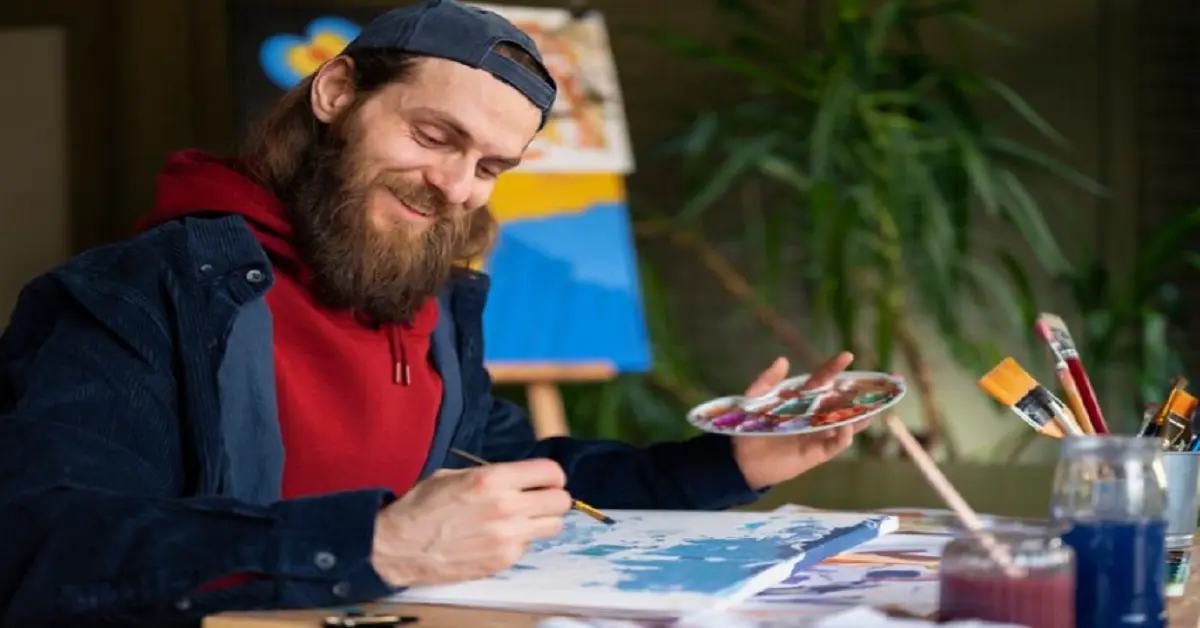Mastering the Art of Drawing: Tips, Techniques, and Inspiration

Introduction
drawing:v04hso9zvvq= art .Drawing is more than just putting pencil to paper; it’s a form of expression, a way to capture the world around us, and a skill that anyone can develop with practice. Whether you’re a complete beginner or looking to refine your technique, this comprehensive guide will walk you through everything you need to know to master the art of drawing.
History of Drawing
Drawing has ancient origins, with evidence of humans creating images on cave walls over 30,000 years ago. These early drawings were more than mere decorations; they were a means of communication and storytelling. As civilizations advanced, so did the techniques and materials used for drawing, evolving from charcoal on stone to ink on papyrus and paper. The Renaissance period marked a significant leap in drawing as an art form, with masters like Leonardo da Vinci and Michelangelo setting new standards. drawing:v04hso9zvvq= art
Benefits of Drawing
Drawing offers numerous benefits beyond creating beautiful images. It enhances creativity by encouraging you to think outside the box and see things from different perspectives. Additionally, drawing can improve mental health by providing a meditative escape and reducing stress. It also helps develop fine motor skills, which are essential for tasks that require precision and coordination. drawing:v04hso9zvvq= art
Essential Drawing Tools
To get started with drawing, you’ll need some basic tools:
- Pencils and Erasers: A range of pencils from soft (B) to hard (H) will allow you to create different effects. A good eraser is also essential for correcting mistakes.
- Paper Types: Different papers have different textures and weights, which can affect your drawing. Experiment with smooth and rough surfaces to see what you prefer.
- Additional Tools: Other useful tools include blending stumps for shading, rulers for straight lines, and sharpeners to keep your pencils in top shape.
Basic Drawing Techniques
Mastering basic techniques is crucial for developing your drawing skills:
- Contour Drawing: Focus on capturing the outline of your subject without lifting your pencil. This helps improve hand-eye coordination.
- Shading Techniques: Learn to create depth and dimension by varying pressure and using techniques like hatching, cross-hatching, and stippling.
- Perspective Drawing: Understanding perspective is essential for creating realistic drawings. Start with simple one-point perspective and gradually move to more complex two-point and three-point perspectives.
Understanding Proportions
Getting proportions right can be challenging, but it’s essential for realistic drawings:
- Human Anatomy Basics: Study the basic proportions of the human body, such as the head being approximately one-eighth of the total height.
- Proportions in Nature: Observe the natural world and note how proportions vary among different plants and animals.
Drawing from Life vs. Drawing from Photos
Each approach has its benefits and challenges:
- Benefits of Drawing from Life: Drawing from life helps you capture the essence and movement of your subject. It also improves your observational skills.
- Challenges of Drawing from Photos: While convenient, drawing from photos can sometimes lead to flat or lifeless drawings if you rely too heavily on copying rather than interpreting.
Exploring Different Drawing Styles
There are many styles to explore, each offering unique challenges and rewards:
- Realism: Focuses on capturing subjects as accurately as possible.
- Abstract: Emphasizes form and color over realistic representation.
- Cartooning: Uses exaggerated features and simplified shapes for a playful and expressive style.
Learning to See Like an Artist
Developing your observational skills is key to improving your drawings:
- Observational Skills: Practice looking at your subject critically, noting details such as light, shadow, and texture.
- Training Your Eye: Use exercises like blind contour drawing, where you draw the outline of your subject without looking at your paper, to train your eye and hand to work together.
Practice Exercises for Beginners
Consistent practice is essential for improvement:
- Gesture Drawing: Quick, expressive sketches that capture the movement and pose of your subject.
- Still Life Drawing: Set up a simple arrangement of objects and practice drawing them from different angles and lighting conditions.
Common Mistakes and How to Avoid Them
Everyone makes mistakes, but recognizing and correcting them is part of the learning process:
- Proportion Errors: Use measuring techniques, such as comparing the size of different elements with your pencil, to ensure accuracy.
- Overworking a Drawing: Know when to stop. Overworking can make your drawing look muddy and lose its freshness.
Tips for Finding Inspiration
Inspiration can come from many sources:
- Keeping a Sketchbook: Carry a sketchbook with you to capture ideas and observations on the go.
- Exploring Different Subjects: Don’t limit yourself to one subject. Experiment with landscapes, portraits, and abstract forms to keep your work exciting and varied.
Taking Your Drawing to the Next Level
Once you’re comfortable with the basics, push your skills further:
- Experimenting with Mediums: Try different drawing mediums such as charcoal, ink, or digital tools to expand your skills.
- Joining Art Communities: Connect with other artists, share your work, and receive feedback. Art communities can provide motivation and new perspectives.
Showcasing Your Art
Sharing your art with others can be rewarding and motivating:
- Creating a Portfolio: Compile your best work into a portfolio to showcase your skills and progress.
- Sharing on Social Media: Use platforms like Instagram and Pinterest to share your drawings and connect with a wider audience.
Conclusion
drawing:v04hso9zvvq= art .Drawing is a journey of continuous learning and discovery. By practicing regularly, exploring different techniques and styles, and finding inspiration in the world around you, you can develop your skills and create beautiful, expressive art. So grab your pencils, start drawing, and most importantly, have fun!
[…] influence extends far beyond his lifetime. Many contemporary sculptors draw inspiration from his minimalist approach, and his work is considered a cornerstone of modern art […]